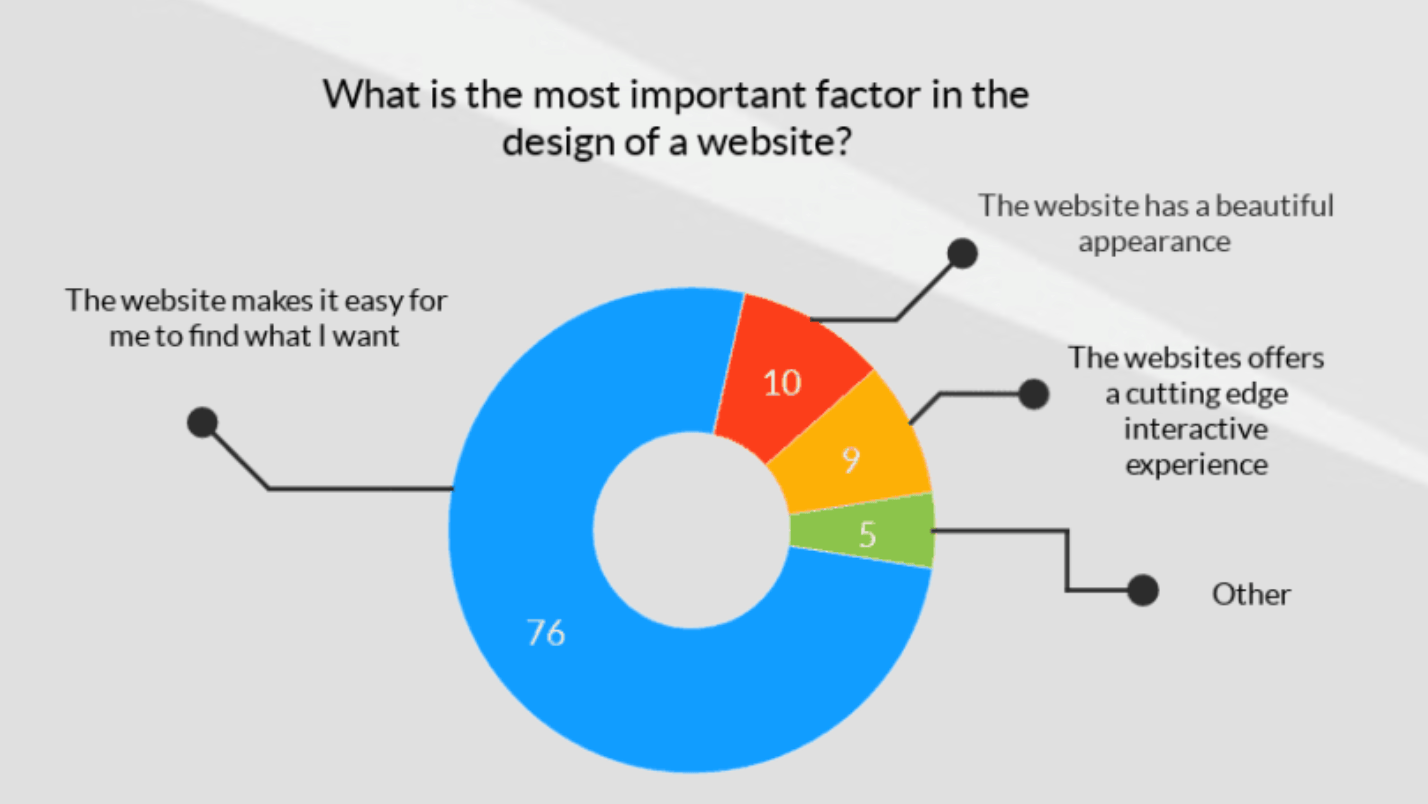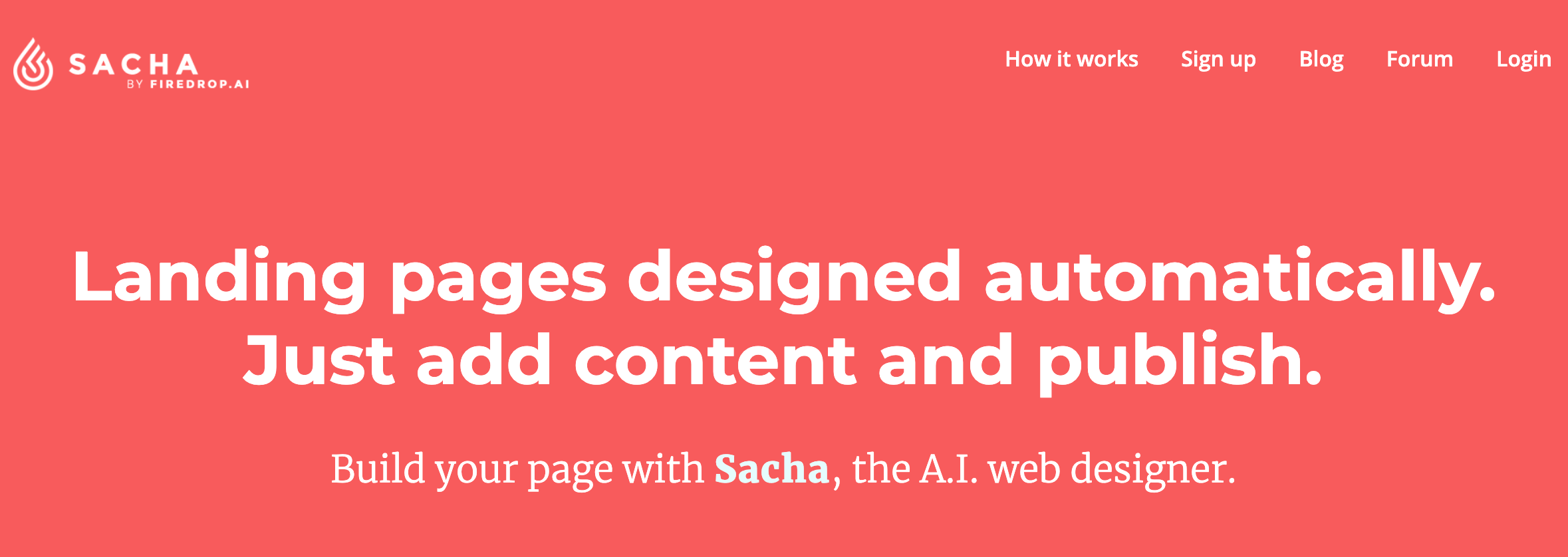Artificial intelligence has been trending upward for years now. In fact, according to Google Trends, the search term piqued back in January 2018.
AI is being used for all different types of applications and technology. In the past, I’ve covered the marketing skills you need to survive in the age of AI.
That’s because marketers have been using AI technology to reshape the way that consumers are targeted. Brands and websites are using AI chatbots to improve communication with website visitors. They’re also using this technology to analyze big data. AI is helping business owners and webmasters gain a competitive advantage in their industries.
But today, AI is also changing the way that we design and develop websites. It’s also going to impact the way we design moving forward.
Traditionally, all websites have been created using HTML. While the code has changed and become more sophisticated over the last couple of decades, sites have become more visually appealing than they were in the past.
Although the technology is still in its infantile stages, ADI (artificial design intelligence) is being used for web design and development.
The thought behind ADI is that the majority of web design can be automated using AI technology. Talks of ADI have been growing over the years, which is what inspired me to write this guide.
I want to share all of this information with you so you can prepare for the future of your website and gain a better understanding of where ADI stands today. With that said, I’m not quite at the point where I’m saying every single site needs to leverage AI for design. I don’t think we’re there just yet.
Instead, I just want you to be aware of the technology and how it will impact the future of web design.
Growth and benefits of AI
Before we dive into the specifics of ADI and artificial intelligence used for web design principles, I want to take a moment to discuss AI as a whole. Essentially, here’s how AI works.
AI technology lets machines and computers perform human tasks. Then, the machines are supposed to learn from their experiences completing those tasks and adjust accordingly to optimize any new inputs.
In order for AI to function properly, the technology needs to be programmed efficiently with deep learning capabilities. All of this technology needs to be able to recognize patterns in the data that’s being processed.
AI is being developed at a rapid pace, and revenue from these applications is growing exponentially as a result.

As you can see from the graph, it’s estimated that the revenue from AI enterprise applications in six years will be ten times where it is today in 2019. It’s already eight times higher than where it was just three years ago.
Clearly, AI is on an upward trend.
The technology needs to be applied somewhere, and the theory is that it can be used for both web development and design, in addition to other purposes.
It’s a common misconception that AI is only used for automating tasks that would normally be done manually. While that’s part of how it works, the technology goes so much deeper than that.
The idea behind AI is that it can be used continuously, at scale, and with precision, using data.
This technology is being streamlined for processes in homes and businesses alike. It can be used for applications like classifying images or object recognition. For example, a smart refrigerator using AI can theoretically create a grocery list for you automatically.
With deep learning capabilities, AI technology will continue to grow and become more advanced in the future.
How ADI works
Now let’s look at how artificial intelligence can be applied to web design with ADI.
In the simplest explanation, ADI can use machine learning to recognize and implement trends in web design. It’s just like anything else using AI technology. Computers analyze data, then automatically make input adjustments.
The idea here is that websites can eventually be made on their own, using AI. This is very different from the way websites are being built today.
Right now, there are only a few options for web design and development.
First, you can learn how to code and do everything yourself from scratch. This is definitely not the easiest approach. It takes time, trial, and error.
Alternatively, you can use website builders that don’t require any coding. Drag and drop interfaces make it easy for people with no coding experience to build a website on their own. But still, this approach requires time and manual work. Plus, you need to have an understanding of design in order for your site to be both appealing and efficient.
If you don’t have the time or the skills to do this, you can hire a developer or a designer to handle everything for you. While this frees up your time, you’ll pay a premium price for those services. Again, the work still needs to be done manually by someone.
Artificial intelligence is a newer method for web design, and it could be the primary design option of the future.
Wix, an industry leader in the website building space released their version and vision for ADI back in 2016.

The concept is fairly straightforward.
Wix asks questions about the needs of your website. Then it takes those responses to create content elements that are both unique and robust from a design standpoint for your website.
Wix will also give you custom images and text if you use their ADI. I talk about this in my step-by-step guide on how to create a Wix website.
The foundation for ADI is supposed to be a machine that has the brain of a web designer. This is achieved by programming technology to observe existing websites.
Then, the technology takes those website design best practices and applies them to a new site that’s being built. All of this happens automatically.
In theory, this would even eliminate the need for templates. Sites could eventually be built without any input from humans.
Applying technology to web design
Let’s take a step back away from AI for a second and just focus on web design.
When most people think about design, they automatically assume that creativity is a requirement. In some instances, that’s true; but only to a certain extent.
Great web designers don’t necessarily need to be the most creative people on the planet or have a background in art. They simply need to know how to apply best practices.
Take a look at the most important factors of web design, according to website visitors.

As you can see from the graph, 76% of people say that they want sites to make it easier for them to find what they’re looking for. Just 10% of people say that a beautiful appearance is most important.
Theoretically, you could design a website without any creativity whatsoever. It’s just a matter of knowing those best practices and implementing them.
That’s where AI can come into play.
AI solutions can be offered as an assistant for people who are building websites. Machines can analyze the design, and compare it to the databases of best practices.
Ultimately, the technology can be used to offer suggestions related to design.
Think of it like software used for SEO. SEO tools analyze your content and give you keyword suggestions based on what’s ranking or what other sites are doing.
This same concept can be applied to web design.
Since the best practices aren’t really creative, the applications can be taught and programmed into machines. For example, optimal CTA placement on a homepage is something that can be learned and applied by a computer using ADI.
Eventually, the idea is that AI will completely take over the design, but we just aren’t at that point yet.
Even platforms like Wix that are using AI in some form are another are still limited. Human inputs such as answering questions and things of that nature are required for it to work.
Examples of AI web design
In addition to Wix, there are a couple of other platforms that are using AI in web design at a more advanced level.
Again, these are still in the earlier stages of development and somewhat limited. But they are a good indication of where the future of design is headed with AI.
Sacha from Firedrop

Firedrop has AI software called Sacha, which is used for building web pages, as opposed to entire websites.
In theory, you can use this AI platform to build your entire site, but you’d need to go through and do it one page at a time, which kind of defeats the purpose of automation. Either way, this is another example of what’s currently on the market today.
Here’s how it works. Instead of using drag and drop builders, all you have to do is talk to Sacha through live chat.
For example, you could type something like “change the color palette” to get a trending website color scheme on your landing pages.
It’s a great option for those of you who want simple landing pages that are completely customized, as opposed to choosing a template and then editing it to fit your needs.
Sign up for free to try Sacha. Then you can request a consultation to see customized pricing options from Firedrop.
Conclusion
AI is the future.
One way or another, it seems like this technology is slowly going to become apart of everything we do in the coming years. Web design is no exception.
There are already platforms out there that are leveraging AI technology to design and develop websites. Although this software has yet to reach its full potential, I don’t think we’re too far from seeing that day.
So what does this mean for you right now?
You don’t need to go out and start using ADI. But as the technology advances, don’t be so resistant to change. Keep an open mind and stay up to date with the latest trends to ensure that your website has an optimal design.
